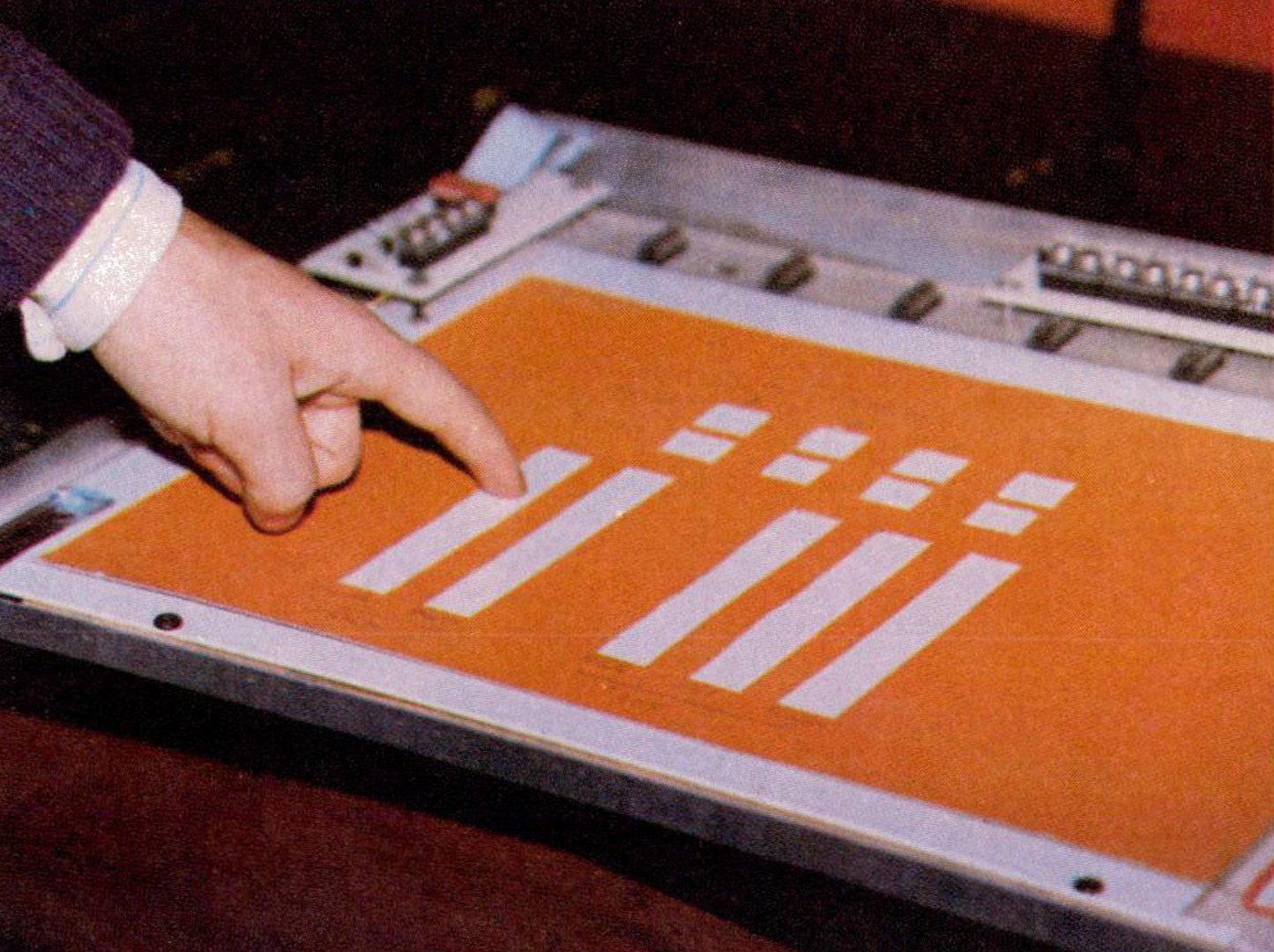“Issues and techniques in touch-sensitive tablet input” by Buxton, Hill and Rowley
Conference:
Type(s):
Title:
- Issues and techniques in touch-sensitive tablet input
Presenter(s)/Author(s):
Abstract:
Touch-sensitive tablets and their use in human-computer interaction are discussed. It is shown that such devices have some important properties that differentiate them from other input devices (such as mice and joysticks). The analysis serves two purposes: (1) it sheds light on touch tablets, and (2) it demonstrates how other devices might be approached. Three specific distinctions between touch tablets and one button mice are drawn. These concern the signaling of events, multiple point sensing and the use of templates. These distinctions are reinforced, and possible uses of touch tablets are illustrated, in an example application. Potential enhancements to touch tablets and other input devices are discussed, as are some inherent problems. The paper concludes with recommendations for future work.
References:
1. Windows on Tablets a s a Means of Achieving Virtual Input Devices. Submitted for publication.
2. Lexical and PraEmaUc Considerations of Input Structures. Computer Graphics 17.1. Presented at the SIGGRAPH Workshop on Graphical input Techniques, Seattle, Washington, June 1982.
3. There is More to Interaction Than Meets the Eye: Some Issues in Manual Input. (in) Norman, D.A. and .Draper, S.W. (Eds.), User Centered System Design: New Perspectives on Human-Computer Interaction. Hillsdale, N.J.: Lawrence Erlbaum and Associates. Publication expected late 1985.
4. ConUnuous Hand-Gesture Driven Input. Proceedings Graphics Interface ’83: pp. 191-195. May 9-13, 1983, Edmonton, Alberta.
5. The Keystroke-Level Model for User Performance Time with Interactive Systems. Cornmunlcations of the ACM 23.7: pp. 396-409.
6. The Human Factors of Computer Graphics Interaction Techniques. IEEE Cornpurer Graphics cznd Applications 4.11: pp. 13-48.
7. DIGI-PAD 5 User’s Manuat GTC0 Corporation, 1055 First Street, RcckviIle, MD 20850.
8. One-Point Touch Input of Vector InTormaUon for Computer Displays. Computer Graphics 12.3: pp. 210-216. SIG- GRAPH’78 Conference Proceedings, August 23-25, 1978, Atlanta, Georgia.
9. A Multi-Touch Three Dimensional Touch- Sensitive Tablet. Human Factors in CoMputer Systems: pp. 21-25. (CHI’85 Conference Proceedings, April 14-18, 1985, San Fransisco).
10. Manipulating Simulated Objects with Real-world Gestures using a Force and Position Sensitive Screen. CoTrt/ruter Graphics 18.3: pp. 195-203. (SIG- GRAPH’84 Conference Proceedings, July 23-27, 1984, Minneapolis, Minnesota).
11. Soft Machines: A Philosophy of User- Computer Interface Design. Human Factors i,n Computing Systems: pp. 19-23. (CHI’83 Conference Procedings, December 12-15, 1983, Boston).
12. A Touch Sensitive Input Device. Proceedings of the 5th Interanational Conference on Computer Music. North Texas State University, Denton Texas, November 1981.
13. Direct Manipulation: A Step Beyond Programming Languages. Computer 16.8: pp. 57-69.
14. The Apple Macintosh Computer. Byte 9.2: pp. 30-54.




